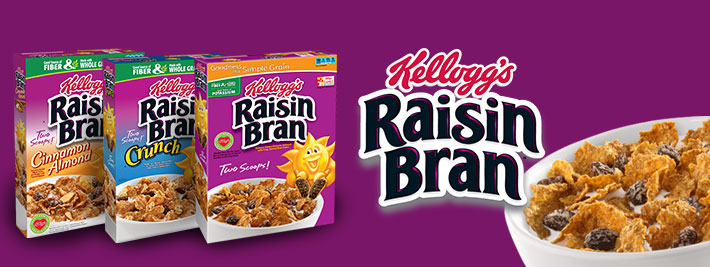
kelloggs.com
Kellogg's (K 0.07%) first-quarter results weren't great, but if you look at the big picture, then you're going to find a great company. It's easy to make a statement like that. Therefore, let's look at the reasons why Kellogg has been, and will continue to be, a great company for investors.
The basics
Before delving into the numbers and reasons why Kellogg is likely to continue to grow on both the top and bottom lines, let's first look at the basics.
For one, Kellogg has been around since 1906. Any company that has been around for more than 100 years has survived two world wars and the Great Depression.
You might read about the likelihood of tough economic times ahead when interest rates rise and the economy must stand on its own two feet without monetary stimulus assistance from the Federal Reserve. From a logical perspective, these predictions are more likely to be correct than not. However, when you invest in a company like Kellogg, which has seen the worst of times, you don't have to worry nearly as much and you would be collecting on a 2.7% dividend yield along the way.
Kellogg is the largest cereal producer in the world. Cereal is a quick and easy breakfast, which is a big reason why so many people love it. Furthermore, Kellogg is adjusting to the rise of the health-conscious consumer with innovations that match these consumption shifts.
Kellogg is also diversified. In addition to cereal, it's still pleasing the sweet tooth and salt addicts around the world as the second-largest producer of cookies and crackers globally. Kellogg also produces toaster pastries, cereal bars, fruit-flavored snacks, veggie foods, and more.
If that's not enough to heighten your interest, then consider that Kellogg is optimistic about its future prospects. Its long-term growth targets include 3%-4% growth for net sales, underlying operating profit growth of 4%-6%, and diluted earnings-per-share growth of 7%-9%. This is all great, but how will Kellogg accomplish these goals?
Project K
In 2013, Kellogg implemented its Project K initiative. In simple terms, the goals are to optimize businesses in core markets, expand into high-growth markets, and drive growth via increased innovation over a four-year time frame.
On the surface, Project K didn't do much for Kellogg in the first quarter of this year, but that's only if you looked at the most basic numbers and went on your way. For instance, net sales declined 2.4% year over year, primarily due to poor performances in all reportable segments excluding U.S. snacks. The underlying profit also suffered a 5.5% hit, partially due to the aforementioned sales declines.
However, Project K's primary goal is significant savings. Those savings are then being invested in higher-growth areas. In all, this strategy is expected to drive growth in revenue, gross margin, operating profit, and cash flow. Since it all starts with savings, let's see if there has been any change in revenue growth versus selling, general, and administrative expenses over the past five years:
That would be a resounding yes. Here are some quick points on Project K savings (past, present, and future):
- $15 million in 2013
- Incremental savings of $50 million to $60 million in 2014
- Annualized cost savings of $425 million to $475 million by 2018
Keep in mind that those savings will be used for geographical expansion and innovation. And Kellogg is experienced enough to know where to invest specifically. In a broad sense, it will expand into developing and emerging markets while aiming for healthy innovations on existing products in established markets.
To give you an idea of how successful Kellogg has been with the early implementation of its Project K initiative, compare the chart above to the same chart for its biggest competitor as well as what's likely to remain one of the safest dividend investments on the planet, General Mills (GIS 0.39%):
General Mills revenue (TTM) data by YCharts
General Mills has been around since 1928, and it's implementing many of the same concepts in order to fuel continuous profitable growth.
If you look at the blue lines in the charts above, then you will see that General Mills has been growing its top line faster, but Kellogg now sports a wider gap between revenue and selling, general, and administrative expenses. However, General Mills does offer a slightly more generous dividend yield of 3% versus Kellogg at 2.7%.
Overall, both companies are long-term winners. Not only that, but they're two exceptional options for investors looking for safe and sustainable dividends.
The Foolish bottom line
Don't pay attention to Kellogg's first-quarter numbers. Instead, pay attention to the early results from its Project K initiative, which are excellent. Going forward, you should see continued savings along with geographical expansion in high-growth markets and innovations in core markets leading to continued growth on both the top and bottom lines. The results won't be immediate, but your patience should be rewarded.

